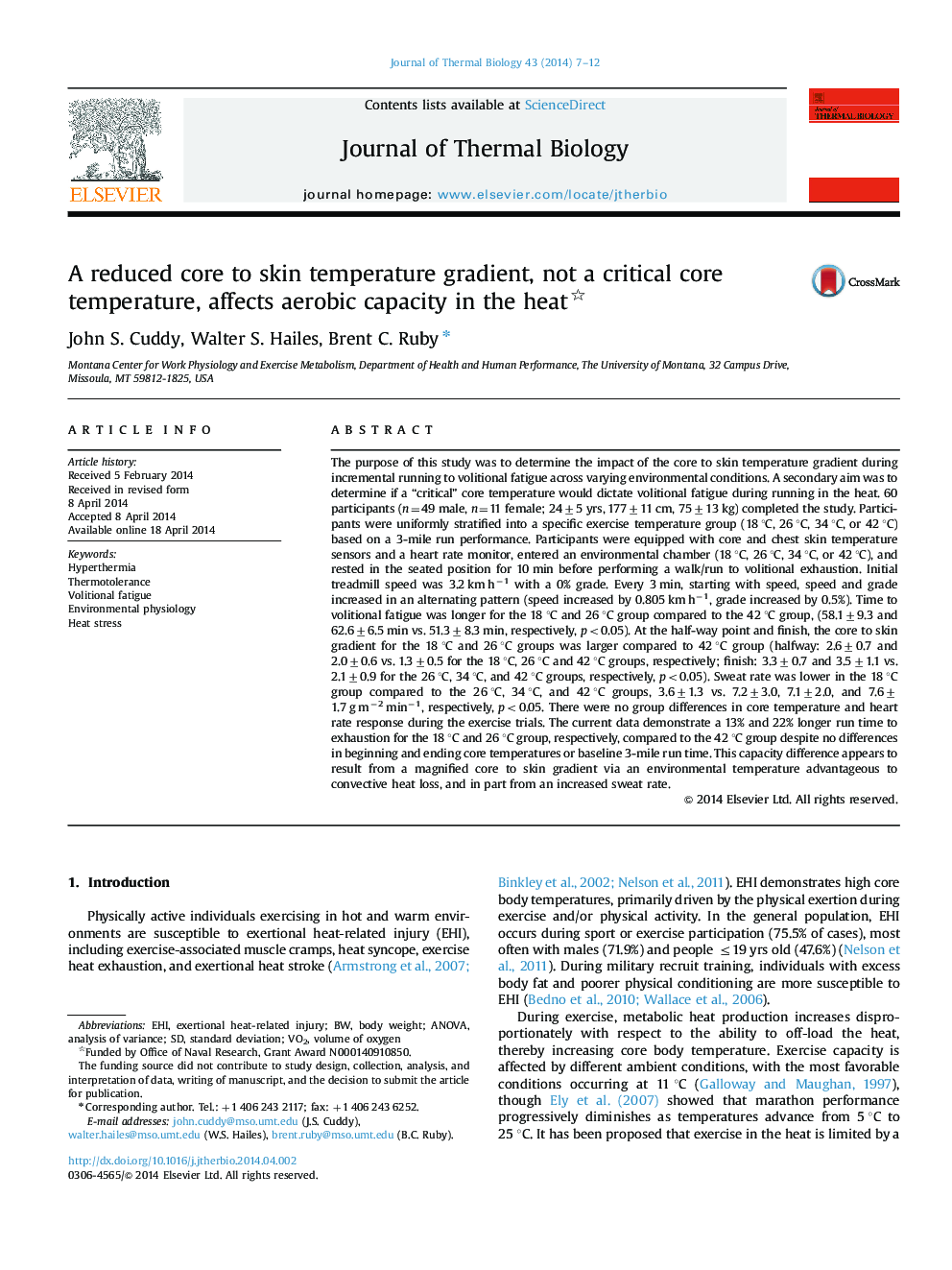| کد مقاله | کد نشریه | سال انتشار | مقاله انگلیسی | نسخه تمام متن |
|---|---|---|---|---|
| 2842961 | 1571102 | 2014 | 6 صفحه PDF | دانلود رایگان |
• A reduction in the core to skin temperature gradient is most responsible for impaired capacity.
• Skin temperature may have a threshold approximating 35.0–35.5 °C before capacity impaired.
• Aerobic fitness and core to skin temperature gradient were best indicators of exercise tolerance.
• Core to skin temperature gradient is more indicative of fatigue compared to core temperature.
The purpose of this study was to determine the impact of the core to skin temperature gradient during incremental running to volitional fatigue across varying environmental conditions. A secondary aim was to determine if a “critical” core temperature would dictate volitional fatigue during running in the heat. 60 participants (n=49 male, n=11 female; 24±5 yrs, 177±11 cm, 75±13 kg) completed the study. Participants were uniformly stratified into a specific exercise temperature group (18 °C, 26 °C, 34 °C, or 42 °C) based on a 3-mile run performance. Participants were equipped with core and chest skin temperature sensors and a heart rate monitor, entered an environmental chamber (18 °C, 26 °C, 34 °C, or 42 °C), and rested in the seated position for 10 min before performing a walk/run to volitional exhaustion. Initial treadmill speed was 3.2 km h−1 with a 0% grade. Every 3 min, starting with speed, speed and grade increased in an alternating pattern (speed increased by 0.805 km h−1, grade increased by 0.5%). Time to volitional fatigue was longer for the 18 °C and 26 °C group compared to the 42 °C group, (58.1±9.3 and 62.6±6.5 min vs. 51.3±8.3 min, respectively, p<0.05). At the half-way point and finish, the core to skin gradient for the 18 °C and 26 °C groups was larger compared to 42 °C group (halfway: 2.6±0.7 and 2.0±0.6 vs. 1.3±0.5 for the 18 °C, 26 °C and 42 °C groups, respectively; finish: 3.3±0.7 and 3.5±1.1 vs. 2.1±0.9 for the 26 °C, 34 °C, and 42 °C groups, respectively, p<0.05). Sweat rate was lower in the 18 °C group compared to the 26 °C, 34 °C, and 42 °C groups, 3.6±1.3 vs. 7.2±3.0, 7.1±2.0, and 7.6±1.7 g m−2 min−1, respectively, p<0.05. There were no group differences in core temperature and heart rate response during the exercise trials. The current data demonstrate a 13% and 22% longer run time to exhaustion for the 18 °C and 26 °C group, respectively, compared to the 42 °C group despite no differences in beginning and ending core temperatures or baseline 3-mile run time. This capacity difference appears to result from a magnified core to skin gradient via an environmental temperature advantageous to convective heat loss, and in part from an increased sweat rate.
Journal: Journal of Thermal Biology - Volume 43, July 2014, Pages 7–12
